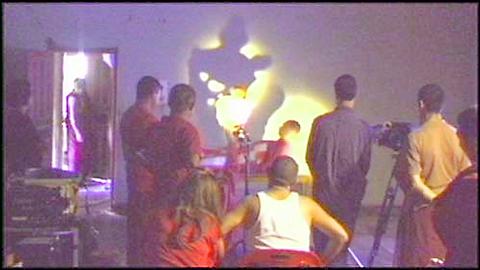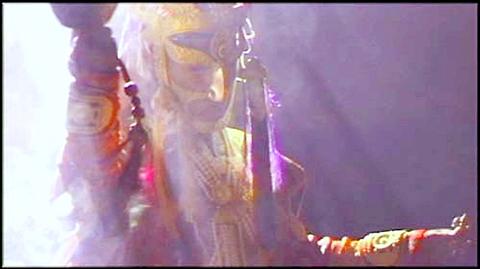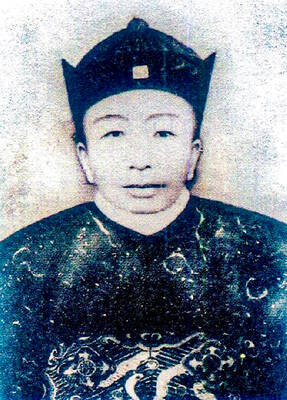As her train wound through the mountains of northern India, Linda Tokarchuk tapped furiously on her laptop late into the night, composing a heart-felt plea, a seven-page email to her would-be producers back in Canada. Please, she wrote, don't leave me stranded here.
If that particular night wasn't the low point in what has become a three-year odyssey then it was soon to follow. She had learned that day, via email, that the financial backers for a documentary film she was shooting had withdrawn their support, with no warning and little reason, other than a vague uneasiness about its commercial viability.
Her desperate response that night would fail to convince them to change their minds. She soon found herself with no money and no prospects.

IMAGES COURTESY OF KHYENTSE NORBU
"Basically, I was left stranded in India with about US$200 to my name," she says. "It was terrifying. I had spent two years developing this project. I had already done everything that could be done. It was like going forward into the unknown. I had no idea what I was going to do."
With few options, Tokarchuk sold her laptop and bought a ticket to Taiwan, where she had planned to teach English and ponder her next move. Now, more than a year later, her project is alive again. Having finally finished the shooting this summer, she is entering the editing phase, and is arranging a deal with Taipei's Public Television Service Foundation, which is interested in airing the documentary.
Completion of the film will end a roller-coaster ride for Tokarchuk. "I think every film has a major story behind it in terms of all the obstacles to getting it made," she said.

IMAGES COURTESY OF KHYENTSE NORBU
Tokarchuk calls her movie Life as Cinema. The film itself focuses on the making of another film, the unique and acclaimed The Cup, which was written and directed by Tibetan Buddhist lama Khyentse Norbu, and which will appear at the Taipei Golden Horse Film Festival in December.
The Cup has been well received at other film festivals around the world, including Cannes, where it was widely praised, and the Noosa International Film Festival in Australia, where it won the Grand Jury Prize for best film.
Tokarchuk's association with Khyentse Norbu and The Cup was the result of a long, circuitous path. A photographer and filmmaker, Tokarchuk studied at the San Francisco Art Institute, then became involved in several film projects while living in New York.
Along the way, she developed an interest in native issues, especially those of Native Americans, which took her eventually to Colorado, where she met Khyentse Norbu. She studied Tibetan Buddhism under him there, and developed an admiration for him as a person and a filmmaker.
"It's very unusual to find a Buddhism teacher who incorporates all these things," she says. "He's quite sophisticated in his tastes [in film]. It's just like sharing a common passion." Khyentse Norbu, also known as H.E. Dzongsar Jamyang Khyentse Rinpoche, was recognized at the age of seven as the incarnation of Jamyang Khyentse Wangpo, a great saint in the Tibetan Buddhist tradition. Educated in Sikkim, Bhutan and India, Khyentse, now 37, is one of the most revered and foremost practitioners of Tibetan Buddhism in the world today.
Khyentse Norbu continues to practice with strict discipline, spending several months every year in solitary retreat. That hasn't stopped him from pursuing his interest in film. He enrolled for a time in the London Film School, then worked as an adviser to Bernardo Bertolucci in the making of "Little Buddha."
For his first feature film, Khyentse Norbu decided to tell the true story of young monks and their obsession with World Cup soccer, and the comic misadventures that result from their determination to see the finals at the monastery. Filmed at the Chokling Monastery in northern India, the film was cast entirely with actual monks with no acting experience.
When Tokarchuk learned about the unique story behind the film, she decided she would make a documentary about the project. "I just really wanted to do it. It kind of got into my blood."
First, she set about arranging a complicated, interconnected web of financing and sponsorship from the Canadian government and various foundations and television networks. Meanwhile, she borrowed some money and left for India to begin shooting.
The title of the film is drawn from a concept espoused by Kyentse Norbu: that life is much like film in that we create the "reality" in our lives as we go along: that is, that the mind, like film, creates mirages disguised as reality, by which we make sense of experience and existence.
"Life as Cinema" plays on this concept, creating and presenting several different layers of reality involved in the making of "The Cup." The film is centered on a conversation with Khyentse Norbu, a starting point for musings on the nature of film, reality and Buddhism, as well as the making of "The Cup." Interwoven throughout is footage shot during the making of "The Cup," and bits of the movie itself. Also included will be interviews with other cast members.
All the elements combine, Tokarchuk says, to create a celluloid meditation on film and reality. "You're there where the real [story] happened and you're creating a film about the making of a film about the real thing," she says.
Of course, it was a different, more harsh reality that eventually stalled Tokarchuk's project. The precarious web of backing she had assembled back in Canada unraveled with a pull of a single string. One party backed out, and the others followed as a direct result.
"It was such an incredibly painful process," she says. "From last December until a month ago I was just grieving. I thought I might have to give up the project. It was like giving away your child."
But Tokarchuk says, it has been an enriching process as well. She has been able to tap into the creative energy and support of members of the Performance Theater Workshop, including director Stan Lai and his wife, Ting Nai-chu, who encouraged her to persevere with her project against all odds.
"When I first came here it seemed like Taipei was nothing but pollution and scooters and chaos," she says. "Now I really feel like I am going to live here for a long time."

The canonical shot of an East Asian city is a night skyline studded with towering apartment and office buildings, bright with neon and plastic signage, a landscape of energy and modernity. Another classic image is the same city seen from above, in which identical apartment towers march across the city, spilling out over nearby geography, like stylized soldiers colonizing new territory in a board game. Densely populated dynamic conurbations of money, technological innovation and convenience, it is hard to see the cities of East Asia as what they truly are: necropolises. Why is this? The East Asian development model, with

June 16 to June 22 The following flyer appeared on the streets of Hsinchu on June 12, 1895: “Taipei has already fallen to the Japanese barbarians, who have brought great misery to our land and people. We heard that the Japanese occupiers will tax our gardens, our houses, our bodies, and even our chickens, dogs, cows and pigs. They wear their hair wild, carve their teeth, tattoo their foreheads, wear strange clothes and speak a strange language. How can we be ruled by such people?” Posted by civilian militia leader Wu Tang-hsing (吳湯興), it was a call to arms to retake

Desperate dads meet in car parks to exchange packets; exhausted parents slip it into their kids’ drinks; families wait months for prescriptions buy it “off label.” But is it worth the risk? “The first time I gave him a gummy, I thought, ‘Oh my God, have I killed him?’ He just passed out in front of the TV. That never happens.” Jen remembers giving her son, David, six, melatonin to help him sleep. She got them from a friend, a pediatrician who gave them to her own child. “It was sort of hilarious. She had half a tub of gummies,

The wide-screen spectacle of Formula One gets a gleaming, rip-roaring workout in Joseph Kosinski’s F1, a fine-tuned machine of a movie that, in its most riveting racing scenes, approaches a kind of high-speed splendor. Kosinski, who last endeavored to put moviegoers in the seat of a fighter jet in Top Gun: Maverick, has moved to the open cockpits of Formula One with much the same affection, if not outright need, for speed. A lot of the same team is back. Jerry Bruckheimer produces. Ehren Kruger, a co-writer on Maverick, takes sole credit here. Hans Zimmer, a co-composer previously, supplies the thumping